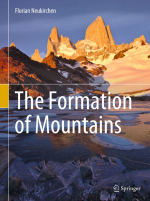Добрый день, Коллеги. Важное сообщение, просьба принять участие. Музей Ферсмана ищет помощь для реставрационных работ в помещении. Подробности по ссылке
The formation of mountains / Образование гор
“Because it’s there.” That was George Mallory's answer to the question why he wanted to climb the highest mountain in the world (Fig. 1.1). The Everest pioneer had an accident a few hundred metres below the summit during his third expedition in 1924. Even though he did not conquer the summit, his legendary saying made him immortal. Since time immemorial, mountains have fascinated people: large and mighty, visible from afar and yet unapproachable (Figs. 1.2 and 1.3), another world in front of which one feels small and insignificant and yet close to heaven. It is no wonder that countless myths surround them —that the gods cavort on the peaks, that giants and trolls live there or witches dance. No religion can do without its sacred mountains. But the peaks also exert a magical attraction on people who want to penetrate this mythical world and challenge the gods. The myths have not diminished as a result. On the contrary, with every first ascent and every misfortune, new myths are added.
“Because it is there”. Why do mountains exist at all? Myths also surround their formation, and even today, despite intensive research, nowhere near all questions have been answered. Nevertheless, we have a relatively good picture of the processes that take place during mountain formation. It is the picture of a dynamic planet that is constantly changing, an Earth whose continents “wander”, whose mountains rise and are eroded again, whose oceans become wider and wider and also disappear again. <...>




